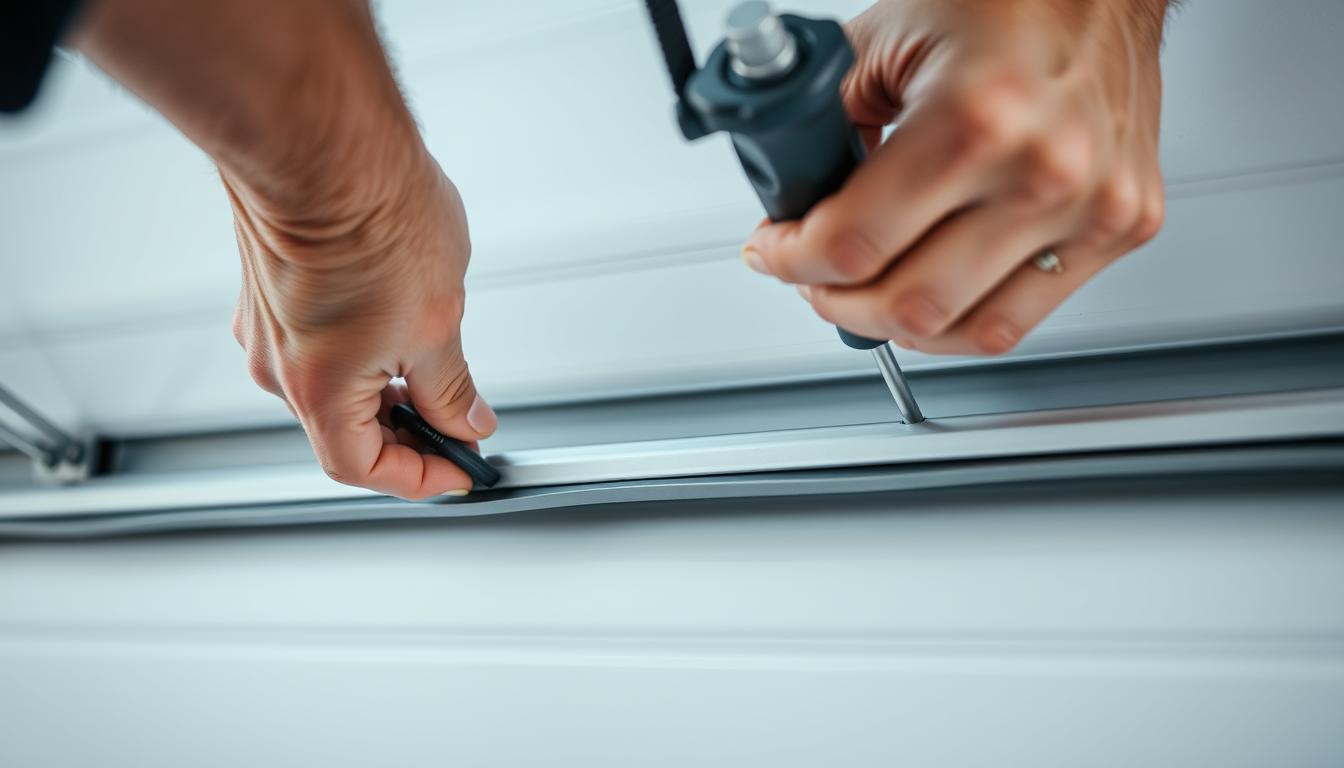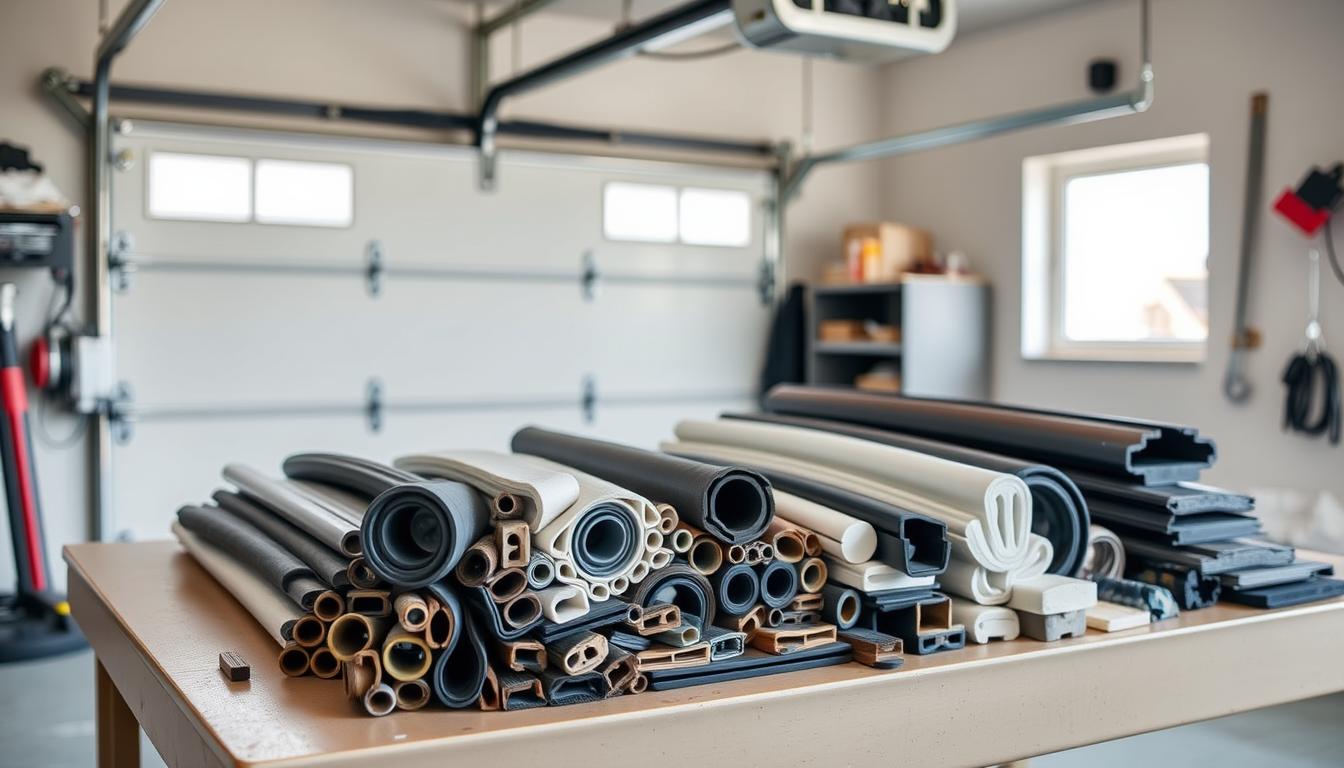When it comes to weatherproofing your home, choosing the right protection for entry points matters. Many Australian homeowners wonder if universal seals truly work for all setups. While products like the 3m Universal Fit Seal promise broad compatibility, real-world performance depends on your specific needs.
Local conditions matter. Harsh sun, heavy rain, and uneven surfaces can challenge even premium rubber designs for garage doors. We’ve seen neighbours install “one-size” options only to face gaps or peeling adhesive within months. But how do you know what works for your space?
This guide cuts through the confusion. We’ll show you how to measure gaps, match materials to your climate, and spot quality features in garage door seals. You’ll learn why some different seal types suit concrete floors better than timber, and when custom solutions beat universal claims for door seals.
Key Takeaways
- Universal seals work for standard gaps but may struggle with uneven surfaces in various door styles
- Material choice impacts durability in Aussie heat and storms for garage doors
- Proper measurement prevents energy leaks and pest entry through the bottom door seal
- Some door styles require specialised seals for full protection
- Regular seasonal maintenance checks extend seal life
Ready to find your perfect match? Let’s explore what “universal” really means down under – and when bespoke beats bulk-buy for garage door products.
Overview of Garage Door Seals for Australian Homes
Your home’s defence system begins where the outside meets your living space. Those thick rubber strips along entry points do more than just block leaves – they’re silent guardians against our harsh climate. Let’s explore how these unsung heroes work and why material choices matter.
When selecting the right seal for your door, you might also wonder, are garage doors magnetic, since the material and design can influence how well certain seals adhere and perform.
Why These Barriers Matter
Ever walked into a garage during cyclone season and stayed dry? That’s quality sealing at work. These strips:
- Stop 90% of dust from coating your tools
- Reduce energy bills by 15% through better insulation
- Prevent snake and spider entry (a real Aussie bonus!)
Material Showdown
Not all rubbers handle our sun equally. Here’s how popular options for garage door seals stack up:
| Material | UV Resistance | Lifespan | Best For |
|---|---|---|---|
| EPDM Rubber | Excellent | 8-10 years | Coastal areas |
| Vinyl | Good | 5-7 years | Budget projects |
| Silicone | Outstanding | 10+ years | Bushfire zones |
Most garage door repair professionals recommend the 13mm thick EPDM variety – it’s flexible enough for uneven concrete yet tough against tyre marks. The glossy black finish isn’t just for looks; it helps repel water like a duck’s back! When selecting a door seal, consider the style and length that best fits your garage’s needs.
Are Garage Door Seals Universal: Compatibility Insights
Your garage isn’t just for parking cars – it’s the frontline defence against our harsh Aussie elements. While many products promise easy solutions, true compatibility depends on more than adhesive strips and hopeful measurements. Make sure to check the product details for compatibility before making a purchase in your cart.

Factors Affecting Seal Compatibility
Ever tried squeezing into your teenager’s jeans? That’s what happens when mismatched components meet. Three key elements determine success:
- Door dimensions: Older models often have unique profiles needing specific replacement parts for the perfect garage door seal
- Floor gaps: Standard 10-20mm spaces work best with universal options, ensuring the best fit for your delivery needs
- Mechanism type: Roller doors demand different flexibility than tilt-and-turn styles, affecting the overall style of the seal
Installation and Sizing Considerations for a Perfect Fit
That shiny new strip won’t help if it peels off by Tuesday. For lasting results:
- Clean surfaces thoroughly – grease stains sabotage adhesive bonds for any door seal product
- Measure twice, cut once (3-metre lengths suit most homes)
- Install during mild weather – extreme heat warps materials, compromising the effectiveness of the seal
Last summer, I helped a mate in Brisbane whose “universal” seal curled like bacon within weeks. Turns out his 1980s timber door needed a specialised vinyl-rubber hybrid. Lesson learned? Measure first, stick later.
Selecting the Perfect Seal for Your Australian Garage Door
Finding the ideal barrier for your space means balancing toughness with smart design. Let’s explore what makes certain options outlast others in our sunburnt country.

Weatherproofing and Durability Features
Our climate throws curveballs – from Darwin’s monsoons to Broken Hill’s dust storms. Top-tier barriers handle these challenges through:
- Triple-layer rubber that resists cracking
- UV inhibitors baked into the material
- Reinforced edges that grip uneven surfaces
| Feature | Standard Seals | Premium Options |
|---|---|---|
| Temperature Range | -10°C to +80°C | -40°C to +120°C |
| Warranty Period | 6 months | 3 years |
| Dust Protection | Basic | Integrated brush strips |
Enhancing Energy Efficiency with Quality Seals
Ever noticed your aircon working overtime? Gaps around entry points could be costing you. Properly fitted barriers:
- Block 70% more drafts than basic models
- Reduce external noise by 50%
- Prevent heat transfer during extreme weather
Local suppliers now offer flame-resistant options perfect for bushfire zones. These specialist products maintain flexibility while meeting strict safety standards – no more choosing between protection and peace of mind.
Conclusion
Protecting your home starts with smart choices at the threshold. Let’s break it down: standard solutions work well for typical setups, but unique spaces demand custom approaches. Ever noticed how coastal homes need different care than outback properties?
Understanding whether seals are universal is important, but so is knowing how a garage door lock work, as proper locking mechanisms help enhance security and ensure a snug fit for the seal.
Are Garage Door Seals Universal
Three essentials guide your decision:
Measure with precision – that 5mm gap today becomes a 10mm draft next summer. A mate in Perth learned this hard way when his “one-size” solution warped within months. Grab that tape measure before shopping for the right garage door seal.
Match materials to conditions. Harsh UV? Go for EPDM rubber. Bushfire risks? Silicone handles heat best. Quality strips with reinforced edges outlast cheap alternatives, saving replacement costs. Consider the style of your door as well to ensure a perfect fit.
While universal options tempt with quick fixes, specialised designs often deliver better long-term value. Think of it like sunscreen – generic brands work, but premium products shield better during our brutal summers.
The investment pays off through real savings: lower power bills, fewer pests, and protected tools. Whether tackling it yourself or hiring pros, focus on durability over initial cost. Ready to feel that satisfying click of a perfectly sealed space? This is the content that will lead to better home protection in the end.
FAQ
Can I use any bottom seal for my existing setup?
Not necessarily. Compatibility depends on your door’s design, track system, and clearance. Brands like B&D or Stratco often have specific profiles – measure the channel width and check manufacturer guidelines before buying this part.
How do rubber seals handle extreme Aussie temperatures?
High-quality rubber variants from suppliers like Bunnings or Mitre 10 resist cracking in heat and stay flexible during frost. Look for UV-stabilised products rated for -10°C to 60°C ranges, especially those designed as a garage door seal.
What’s the easiest way to measure for replacement parts?
Remove the old weatherstrip and lay it flat. Note the total length, thickness, and bulb shape. Most local hardware stores stock 2.4m to 6m rolls – cut to size using tin snips for a custom fit.
Do vinyl seals work better than foam for windy areas?
Yes – rigid vinyl or thermoplastic styles create a tighter barrier against dust storms and coastal gusts. Foam suits quieter suburbs but compresses over time, reducing effectiveness.
Can I install these without professional help?
Absolutely! Many homeowners DIY using adhesive-backed strips or nail-on kits. Just clean the surface, align the bulb with the door’s edge, and secure evenly. Watch YouTube tutorials from Stratco for pro tips.
Will upgrading my weatherstrip lower energy bills?
Properly sealed barriers block 70-80% of draughts, keeping garages cooler in summer and reducing heat loss in winter. Pair with insulated panels for maximum efficiency – some report 15% savings on heating/cooling costs.
How often should I inspect my current setup?
Check every 6 months. Look for cracks, gaps, or pest damage. Coastal homes might need annual replacements due to salt corrosion, while inland properties can often wait 2-3 years. This is crucial to ensure your garage door seal remains effective until the end.

